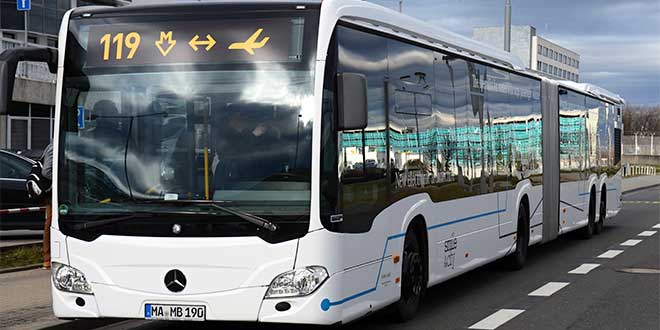Not all passengers fit in a bus on a regular basis and the situation is becoming unbearable. “We are concerned that we might need to hire pushers for the 119 line, and so might attract similar responses to the porters of luggage in Veleslavín,” says, with slight exaggeration, Martin Fafejta, head of design of transport in Ropid.
Is traveling to the airport really such a difficulty?
The transport connection of Prague centre with Václav Havel airport is one of the biggest problems of Prague traffic. For example, the bus link Airport Expres had 59 lines in the last three weeks that were not able to carry all passengers, but more or less all other bus links are full.
How big is the increase in traffic?
In 1991, 1.5 million passengers were checked in; for the year 2016, 13 million passengers are expected to be checked in. Already at the beginning of the 1990s there was discussion about the need for a quick connection between the airport and the railway. This necessity became a Prague evergreen that repeats every year, and there is no construction in sight. The Czech Republic had underestimated the preparation of the railway. In this matter, we were already overtaken by Warsaw.
Does it have any quick solution?
Prior to the summer season there was an interval of 10 minutes introduced on the express bus line; on line 119 the interval was shortened to 5-6 minutes throughout the day. We are still struggling with lines that don’t fit all passengers.
Are there times when it is worse?
The problem of connection of public transport with air transport is an urgent demand of airport passengers. Practically every day and every hour vary from each other depending on the composition of airport passengers. The zoo works in a similar way; if there is nice weather you need to suddenly transport three to four times more passengers. You can never guess if the line from Rome for that certain day is flying a group of 50 backpackers, or businessmen who take a taxi.
Do you cooperate with the airport?
We cooperate intensively with the Český Aeroholding (Czech Aeroholding) company, of course. We receive data from them concerning when and at what times we can assume the largest volumes of passengers.
What about doubled lines?
Doubled lines operate, for example, on Slapy where the locals are used to it, and wait a minute longer for another line. In the case of an airport line that is used by tourists, it is very complicated to explain that they have to wait a little while. All of them will try to fit in the first line. This is happening practically every day during the summer seazon, and it’s already happening now. Thereafter it is about fitters and pushers.
Why don’t you further shorten the intervals?
We try to connect the 119 line with the arrivals and departures in the Veleslavín station. If the buses will be running more often than the underground, the interconnection of transport changes will stop working completely. A bus that won’t be following the underground will depart empty and vice versa. The second problem is the capacity of the infrastructure. We don’t have the capacity at the turntables; we don’t have long enough boarding stops in front of the airport terminals. Already today during the rush hour there is a bus departing in front of a terminal every 60 seconds.
Does it have any solution?
The only quick way is the acquisition of large-capacity buses, which we know from Germany or the Netherlands. Now we will be testing, together with the Public Transport, the three-part 25m-long bus Van Hool AGG300. In spring, there was tested a similar one, a Mercedes-Benz, 21m long. Their operation will be evaluated on the grounds of the results of the Ropid organization, which will either recommend or dissuade the purchase.
Where will people be able to take a ride?
We have so far only permission for line 119. If there will be pandas in the zoo, we will be having a similar problem to solve in a few years on line 112.

